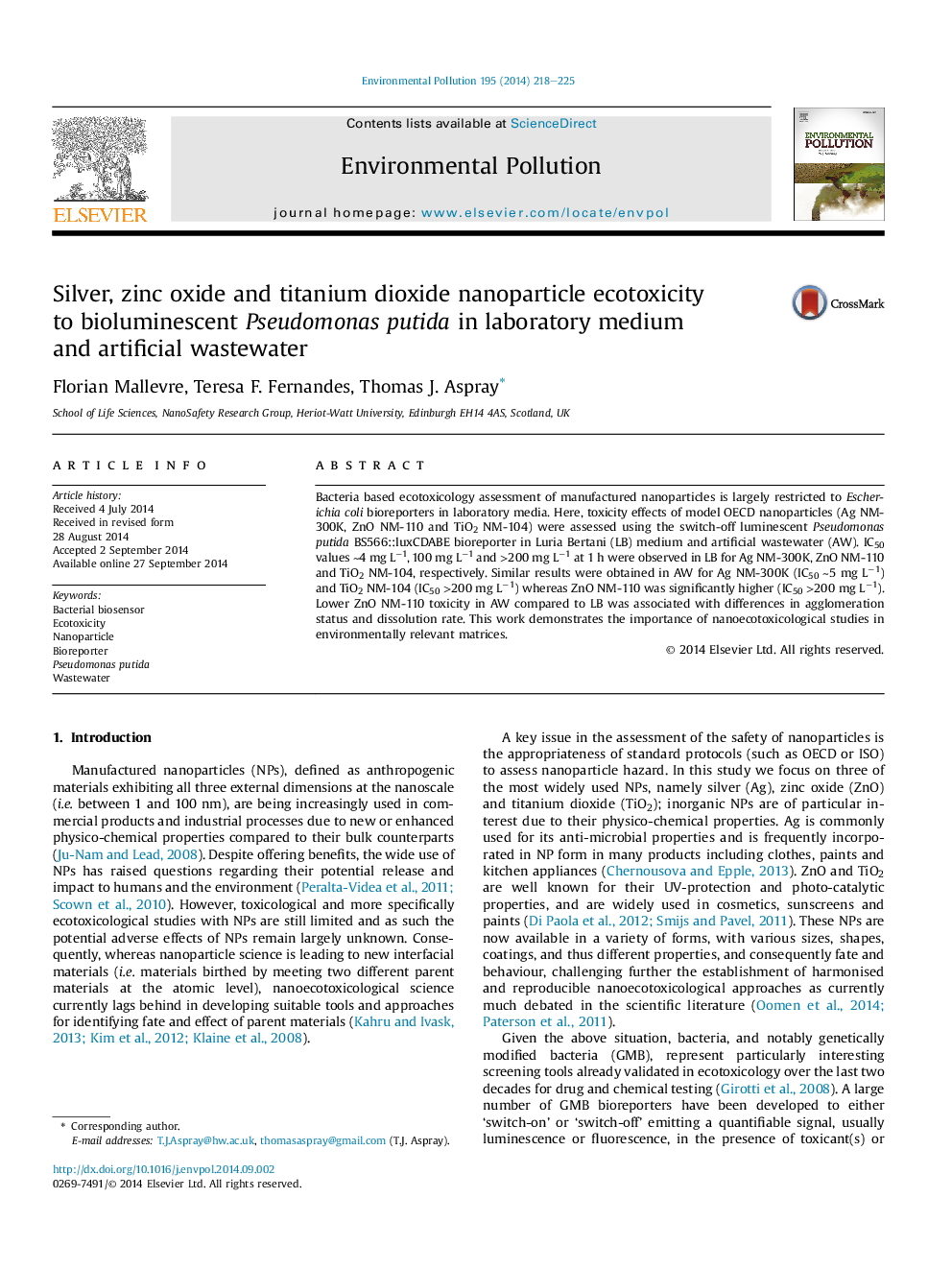| Article ID | Journal | Published Year | Pages | File Type |
|---|---|---|---|---|
| 4424400 | Environmental Pollution | 2014 | 8 Pages |
•The switch-off Pseudomonas putida BS566::luxCDABE was used for nanoparticle testing.•Three model OECD nanoparticles were tested in laboratory medium and artificial wastewater.•Ecotoxicity ranking was: Ag NM-300K > ZnO NM-110 > TiO2 NM-104 nanoparticles.•ZnO NM-110 nanoparticles showed the greatest variability between matrices.•Particle material, agglomeration and dissolution phenomena determined ecotoxicity.
Bacteria based ecotoxicology assessment of manufactured nanoparticles is largely restricted to Escherichia coli bioreporters in laboratory media. Here, toxicity effects of model OECD nanoparticles (Ag NM-300K, ZnO NM-110 and TiO2 NM-104) were assessed using the switch-off luminescent Pseudomonas putida BS566::luxCDABE bioreporter in Luria Bertani (LB) medium and artificial wastewater (AW). IC50 values ∼4 mg L−1, 100 mg L−1 and >200 mg L−1 at 1 h were observed in LB for Ag NM-300K, ZnO NM-110 and TiO2 NM-104, respectively. Similar results were obtained in AW for Ag NM-300K (IC50 ∼5 mg L−1) and TiO2 NM-104 (IC50 >200 mg L−1) whereas ZnO NM-110 was significantly higher (IC50 >200 mg L−1). Lower ZnO NM-110 toxicity in AW compared to LB was associated with differences in agglomeration status and dissolution rate. This work demonstrates the importance of nanoecotoxicological studies in environmentally relevant matrices.
